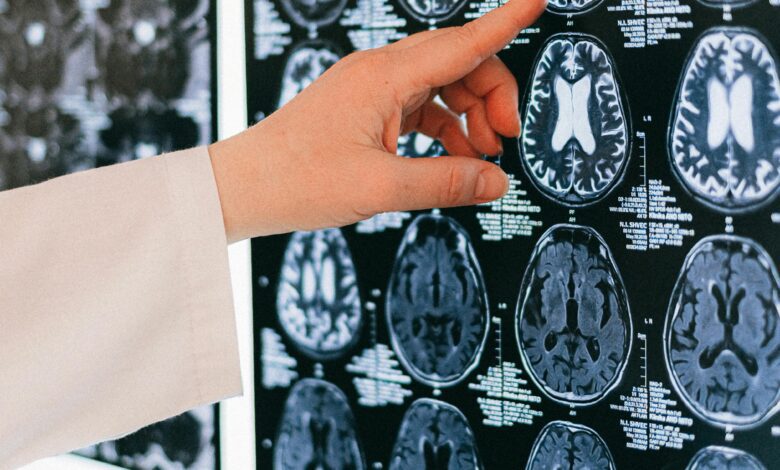Mind the Plastics: The Surprising Presence of Microplastics in Our Brains

Introduction: The Growing Concern of Microplastics Pollution
You’re about to embark on a mind-blowing journey, my friend. Prepare to uncover a startling revelation that will make you rethink your relationship with the very air you breathe and the water you drink. Yes, you heard that right – microplastics, those pesky little plastic particles that have become ubiquitous in our environment, have now been found lurking within the most complex organ in your body: your brain.
As the world grapples with the ever-increasing problem of plastic pollution, a new and unsettling discovery has emerged, one that challenges our understanding of the true extent of this global crisis. In this article, we’ll dive deep into the surprising presence of microplastics in brains, exploring the potential health risks, the sources of contamination, and the urgent need for action.
What are Microplastics and How Do They End Up in Our Brains?
Microplastics are tiny plastic fragments, fibers, or beads that are less than 5 millimeters in size. These microscopic marvels of modern convenience can come from a variety of sources, including the breakdown of larger plastic items, synthetic clothing, and even personal care products. As these plastics make their way into our waterways, soil, and air, they inevitably end up being ingested or inhaled by humans and animals alike.
But how do these tiny plastic particles manage to infiltrate the most protected and vital organ in our bodies? The answer lies in the intricate pathways of our circulatory and nervous systems. Microplastics, once inside our bodies, can cross the blood-brain barrier, a highly selective filter that normally protects the brain from harmful substances. This means that these plastic invaders can potentially disrupt the delicate balance of our brain function, with unknown consequences.
The Surprising Discovery: Microplastics Found in the Human Brain
The discovery of microplastics in brains is a recent and startling revelation that has sent shockwaves through the scientific community. Researchers have conducted studies analyzing brain tissue samples from both living and deceased individuals, and the results are nothing short of alarming.
In one study, researchers found microplastics in the brain tissue of deceased individuals, with the highest concentrations detected in the olfactory bulb, the part of the brain responsible for our sense of smell. This suggests that the inhalation of microplastics may be a significant route of exposure, as these particles can travel directly from the nasal cavity to the brain.
Another study, involving living participants, revealed the presence of microplastics in the cerebrospinal fluid, the fluid that surrounds and cushions the brain and spinal cord. This discovery raises even more questions about the long-term implications of microplastics in the brain and their potential impact on neurological function.
Potential Health Risks Associated with Microplastics in the Brain
As the scientific community grapples with the implications of this startling discovery, the potential health risks associated with microplastics in the brain are becoming increasingly clear. These tiny plastic particles, once inside the brain, can interact with delicate neural pathways and disrupt the normal functioning of this vital organ.
One of the primary concerns is the potential for microplastics to trigger inflammatory responses within the brain. Inflammation has been linked to a range of neurological conditions, including Alzheimer’s disease, Parkinson’s disease, and even depression. Additionally, microplastics may interfere with the brain’s ability to communicate effectively, leading to cognitive impairments and behavioral changes.
Another worrying aspect is the ability of microplastics to accumulate and potentially release harmful chemicals, such as bisphenol A (BPA) and phthalates, which are known endocrine disruptors. These chemicals can disrupt the delicate hormonal balance in the brain, potentially leading to developmental issues, reproductive problems, and even neurological disorders.
Sources of Microplastics Contamination
The ubiquity of microplastics in our environment is truly staggering, and the sources of this contamination are numerous and far-reaching. From the clothes we wear to the food we consume, microplastics have infiltrated every aspect of our lives.
One of the primary sources of microplastics is the breakdown of larger plastic items, such as water bottles, plastic bags, and packaging materials. As these plastics degrade over time, they release tiny fragments that can be carried by wind and water, ultimately finding their way into our food and water supplies.
Another significant source of microplastics is the shedding of synthetic fibers from our clothing. Every time we wash our clothes, millions of microscopic fibers are released into the wastewater, eventually ending up in our oceans and waterways. These fibers can then be ingested by aquatic life and subsequently make their way up the food chain, ultimately reaching our own plates.
Personal care products, such as exfoliating scrubs and toothpaste, are also a major contributor to microplastics pollution. Many of these products contain tiny plastic beads or microbeads, which are designed to provide a scrubbing or polishing effect. These beads are often too small to be filtered out by wastewater treatment plants and can end up polluting our waterways and eventually making their way into our bodies.
The Impact of Microplastics on the Environment and Wildlife
The presence of microplastics in the human brain is just the tip of the iceberg when it comes to the broader environmental impact of this global crisis. As these tiny plastic particles continue to accumulate in our ecosystems, they are wreaking havoc on the delicate balance of our natural world.
One of the most concerning aspects of microplastics pollution is its impact on wildlife. Marine life, from microscopic plankton to majestic whales, are being increasingly exposed to these plastic invaders. Ingestion of microplastics can lead to a range of health issues in animals, including digestive problems, reproductive challenges, and even death.
The impact of microplastics extends far beyond the oceans, as these particles have been found in terrestrial environments as well. Soil-dwelling organisms, such as earthworms and insects, are also being affected, with microplastics disrupting their natural behaviors and potentially altering the entire ecosystem.
The cascading effects of microplastics pollution are far-reaching and deeply concerning. As these plastic particles make their way through the food chain, they can ultimately end up on our own plates, further perpetuating the cycle of contamination and exposing us to potential health risks.
How to Reduce Exposure to Microplastics
As the alarming presence of microplastics in the human brain becomes more widely known, it’s time to take action and reduce our exposure to these plastic invaders. While the problem may seem daunting, there are several steps we can take as individuals to make a difference.
One of the most effective ways to reduce your exposure to microplastics is to minimize your use of single-use plastics. This includes opting for reusable water bottles, shopping bags, and food containers, as well as avoiding products that contain microbeads or other plastic additives.
Another important step is to be mindful of your clothing choices. Opt for natural fibers, such as cotton, wool, or linen, which shed fewer synthetic fibers during the washing process. When washing synthetic fabrics, use a specialized microfiber-catching laundry bag to trap the tiny plastic fibers before they enter the wastewater system.
Additionally, be a conscious consumer and read the labels on your personal care products. Avoid those that contain microplastics or other plastic-based ingredients, and instead, choose natural, plastic-free alternatives.
Also read: Caught in the Crosshairs: The Troubling Tale of Microplastics Found in Testicles!
Research and Studies on Microplastics in Brains
The discovery of microplastics in the human brain has sparked a flurry of research and scientific studies, as the global community scrambles to understand the full extent of this emerging public health concern.
One of the pioneering studies, conducted by researchers at the University of Newcastle in Australia, analyzed brain tissue samples from deceased individuals and found microplastics in every single sample. The highest concentrations were detected in the olfactory bulb, which is responsible for our sense of smell, raising questions about the potential impact on neurological function.
Another study, led by scientists at the Vrije Universiteit Amsterdam in the Netherlands, examined the presence of microplastics in the cerebrospinal fluid of living participants. The results were equally alarming, with the researchers detecting the presence of these plastic particles in the fluid that surrounds and protects the brain and spinal cord.
As the scientific community continues to explore the implications of microplastics in the brain, more studies are being conducted to better understand the mechanisms of exposure, the long-term effects, and potential mitigation strategies. The urgency to unravel this complex issue is palpable, as the health of both current and future generations hangs in the balance.
Government Regulations and Policies on Microplastics
In response to the growing concern over microplastics pollution, governments around the world have begun to take action, implementing regulations and policies to address this global crisis.
One notable example is the European Union’s ban on the use of microbeads in personal care products, which came into effect in 2022. This legislation aims to reduce the amount of microplastics entering our waterways and, ultimately, our bodies.
Similarly, several countries, including the United States, Canada, and the United Kingdom, have introduced measures to phase out the use of microbeads in cosmetics and personal care items. While these are positive steps, there is still much more work to be done to tackle the broader issue of microplastics pollution.
Governments are also exploring ways to improve wastewater treatment processes to better capture and remove microplastics before they can be released into the environment. Additionally, some nations are investing in research and development to find innovative solutions to the microplastics problem, such as the development of biodegradable alternatives to traditional plastic products.
However, the global response to the microplastics crisis remains uneven, and more comprehensive and coordinated efforts are needed to truly address this pressing environmental and public health concern.
Conclusion: The Urgent Need for Further Research and Action
The discovery of microplastics in the human brain is a sobering wake-up call, a stark reminder of the far-reaching consequences of our reliance on plastic. As we grapple with this unsettling revelation, it’s clear that the time for action is now.
The potential health risks associated with microplastics in the brain are still not fully understood, but the implications are deeply concerning. From cognitive impairments to neurological disorders, the presence of these plastic invaders in our most vital organ demands our immediate attention and a concerted global effort to address this crisis.
Join the fight against microplastics pollution and take action today. Sign our petition calling for stricter regulations, increased research funding, and comprehensive solutions to this global problem. Together, we can protect our brains, our environment, and our future.The path forward requires a multi-pronged approach, from individual lifestyle changes to government policies and industry-wide innovations. By reducing our reliance on single-use plastics, supporting the development of biodegradable alternatives, and investing in advanced waste management systems, we can begin to turn the tide on this insidious form of pollution.
As we continue to unravel the mysteries of microplastics in the brain, one thing is clear: the time for complacency has passed. We must act now, with a sense of urgency and a commitment to safeguarding the health and well-being of our planet and its inhabitants. The future of our minds, and the future of our world, depends on it.





